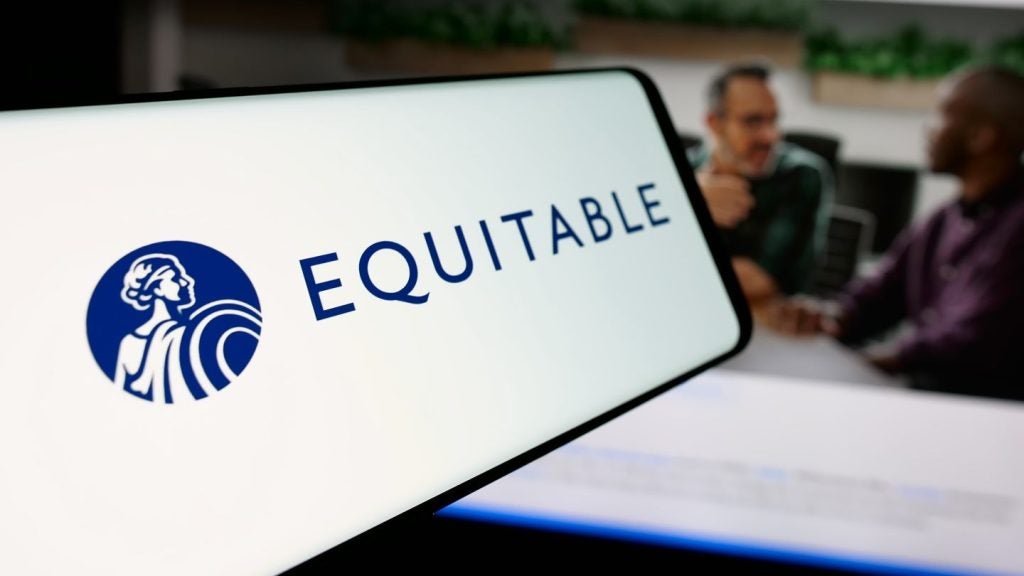Jumping in at the deep end, Sun Life’s new CEO Dean A
Connor has outlined a new strategy aimed at jolting the insurer’s
earnings out of stagnation. Changes include Sun Life’s exit from
the US variable annuity market and greater emphasis on driving
growth in its Asian operations.
 A new
A new
broom, it is said, sweeps clean. This is certainly the approach of
Sun Life Financial president and CEO Dean A Connor who announced a
sweeping restructuring of the Canadian insurer less than two weeks
after his appointment to the positions at the start of December
2011. Connor was formerly Sun Life’s chief operating officer.
“Today begins a new chapter in the
history of Sun Life Financial,” Connor proclaimed in a conference
call on 12 December. “We are charting a new course with a new
strategy that leverages what we do best today, and positions us for
success as we pursue the many opportunities in our business around
the world.”
Connor explained that the key
objectives of the restructuring are to reduce financial volatility
while at the same time accelerating growth and increasing the
return on shareholders’ equity by shifting capital to businesses
with superior growth, risk and return characteristics.
The most significant step towards
reducing volatility is the decision to cease writing new variable
annuity (VA) and individual life business in the US at the end of
2011.
On the decision on VA’s, Conner
said: “Variable annuities carry a significantly higher capital
requirement under Canadian capital rule than the US.”
He added that under Canadian
accounting rules equity and bond market volatility can result in VA
business in the US producing “dramatic swings in net income”.
 Cessation of new VA business in the US will lead to about
Cessation of new VA business in the US will lead to about
800 out of about 3,000 employees in the US becoming redundant and,
estimates Sun Life, will result in it incurring a one-time, pre-tax
transition cost of between C$75m ($73.5m) and C$100m. In addition,
C$97m of goodwill associated with the US VA business is likely to
be written down.
On the decision to cease selling
individual life products in the US, Connor explained that Sun Life
has relied on VA distribution wholesalers to perform this function.
Without this in future it would not have been viable to build a
dedicated life insurance business unit to the required scale.
Connor noted that Sun Life exited
the US universal life market some 18 months ago. The reason, he
said, was that these products had become commoditised, were “thin
on margin” and sensitive to low interest rates.
In this regard, president of Sun
Life Financial US, Wes Thompson, made his similar view clear at a
Citi Financial Services conference in March 2011.
“There’s no difference from term
life to universal life, generally speaking,” said Thompson.
“They’re both commodities. It is price-driven and the top sellers
of those two products have the lowest prices.”
Concluding, he stressed: “That’s
not sustainable.”
However, the cessation of Sun
Life’s VA business in the US comes as a significant about-turn when
compared to the view expressed by Thompson at the Citi Financial
Services conference.
Referring to the huge number of
American Baby Boomers reaching the retirement age of 65,
 Thompson
Thompson
stressed: “It’s so significant that we believe there is an
opportunity to play in the variable annuity space.”
He added: “We feel good about where
we are going.”
Thompson reiterated Sun Life’s
positive view on its future in the US VA market again in September
2011 at the Scotia Capital Financials Summit.
“We want to grow this [VA] market
moderately with a balanced approach,” Thompson said.
Sun Life reported VA sales in the
US in the third quarter of 2011 of $847m, 90% of its total sales in
the US.
Sun Life’s final decision to exit
the US VA market is clearly a very recent one. If a tipping point
was reached it is quite possible that it came in the wake of the
insurer’s results in the third quarter of 2011.
In the quarter, Sun Life’s
operating net income slumped to a loss of C$572m from a profit of
C$897m in the first half of the year.
Sun Life attributed the loss in the
third quarter to reserve increases of C$684m which were required
because of steep declines in equity markets and interest rates
reflected primarily in Sun Life’s US VA and individual life
business.

Four-pillar
strategy
Expanding on Sun Life’s growth
strategy, Connor said that it will be based on four pillars, the
first of which will be to build on Sun Life’s leadership position
in Canada in insurance, wealth management and employee
benefits.
Despite its withdrawal from the US
VA and individual life business, the country remains an important
part of Sun Life’s growth strategy. As the insurer’s second
strategic pillar Connor explained that Sun Life’s focus in the US
will be on becoming a leader in group insurance and voluntary
benefits both of which, he stressed, are “less capital-intensive
businesses”.
Highlighting what he sees as Sun
Life’s competitive advantage in the US group life segment, Connor
said: “The ability to leverage people, technology and process
between our large Canadian benefits business and our US benefits
business is something none of our US competitors can do.”
At the end of 2010 Sun Life
reported that its US employee benefits business unit had about
35,000 policyholders and more than $2bn of business in-force,
covering about 12m lives.
Thompson has also spoken
enthusiastically about opportunities in the voluntary employee
benefits sector.
“That space [voluntary benefits] is
the fastest growing segment of the group-insurance marketplace,”
Thompson said at the Scotia Capital Financials Summit.
Sun Life, he noted, wants to become
a top-five player in the segment within five years. At present, he
added, a top-five position requires premium income of about $300m
compared to the $100m Sun Life is generating at present.
Asset management and
Asia
As its third strategic pillar
Connor said Sun Life will support its MFS Investment Management
unit’s growth in the US and other countries as well as broadening
Sun Life’s other international asset management businesses.
“MFS has a large US presence and
over C$250bn of assets under management globally,” said Connor.
Unsurprisingly, Sun Life has
selected as its fourth strategic pillar developing markets,
specifically those in Asia where it already has operations in
China, India, Indonesia, the Philippines and Hong Kong.
“Today Sun Life Asia generates a
little more than C$100m of run rate a year earnings for our
shareholders and we see this as a significant opportunity that
deserves a richer concentration of the company’s resources,” said
Connor.
Undoubtedly Conner’s objective with
Sun Life’s new strategy will be to put it back on a growth path
that came to an abrupt end in 2007 when the insurer’s net income
peaked at C$2.29bn. Since then, Sun Life’s net profit slipped badly
and despite a recovery in 2010 remains well below historic levels
with its latest third quarter results indicating that 2011 will be
no different.
Notably, answering an analysts’ question Connor confirmed that
in the absence of new growth drivers, Sun Life’s normalised “run
rate” net income is between C$1.4bn and C$1.7bn, a level roughly in
line with its 2005 net income.







